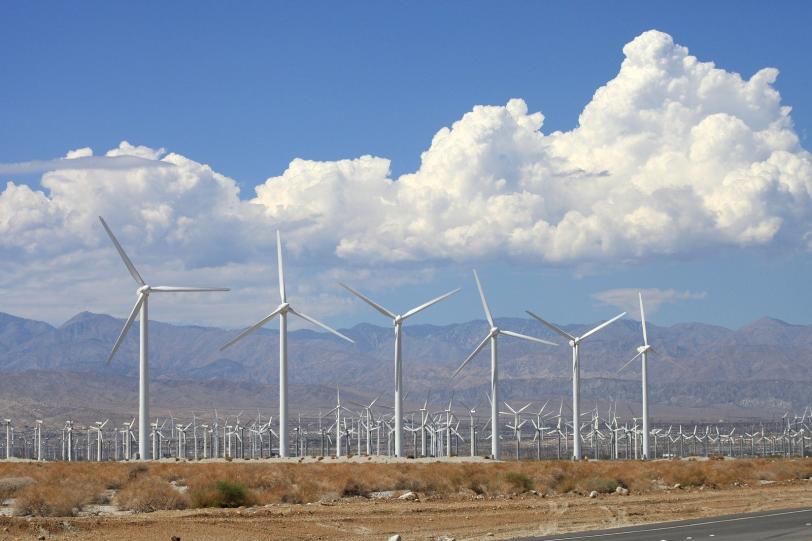Building a Better Battery for Renewable Energy Storage
Solar, wind and other renewable energy sources reduce consumption of fossil fuels but also pose challenges to the electrical grid because their power generation fluctuates, heightening the need for better battery technology to store their energy until it's needed to feed the grid.
By Glenn Roberts Jr.
Solar, wind and other renewable energy sources reduce consumption of fossil fuels but also pose challenges to the electrical grid because their power generation fluctuates, heightening the need for better battery technology to store their energy until it's needed to feed the grid.
Existing energy storage technologies for the electrical grid, including more conventional lead-acid batteries and pumped hydropower – in which water is pumped to a higher elevation and later released to flow down through turbines to generate electricity – are not very efficient.
A team of researchers at Stanford and SLAC National Accelerator Laboratory has developed a mix of materials that shows promise as a cost-effective alternative to standard batteries – able to quickly and efficiently charge and discharge their energy over thousands of charges, with no energy loss after 1,000 charges.
The battery design, featured in the Oct. 23 edition of Nature Communications, uses a mix of abundant, inexpensive materials, including forms of carbon and copper in the electrodes, and a liquid solution composed of sodium and potassium.
Hybrid Electrode
In earlier experiments, researchers proved that materials used in the positive electrode could be adapted for electrical grid applications because of the electrode's demonstrated long life – it retains up to 83 percent of its capacity after 40,000 charge cycles – as well as its high power and high energy efficiency.
It is composed of a material with a structure similar to that of Prussian blue – a popular synthetic pigment used for centuries in paintings and blueprints. The material has an "open-framework" cubic crystal structure that allows it to quickly charge and discharge electricity, and also contributes to its stability and longevity.
For comparison, specialized lead-acid batteries – known as deep-cycle batteries – are designed for a long life, on the order of 2,000 to 3,000 charges, depending on how deeply they are discharged in each cycle, while standard sealed lead-acid batteries may yield about 200 to 300 charge cycles.
The new battery design also improves the performance of the negative electrode, which was problematic in previous experiments, said materials scientist Yi Cui of Stanford University and SLAC. The challenge was in identifying the right blend of materials to produce a low-cost, stable and long-lived negative electrode that would be compatible with the positive electrode, he said.
Cui and his colleagues report that they have found an innovative way to blend a porous form of carbon with another material, called polypyrrole, to create a finely tuned hybrid material for the negative electrode. When it’s used with the Prussian blue positive electrode, the resulting battery has high energy efficiency – up to 92 percent at a typical discharge rate – with no measured energy loss in the first 1,000 charge-discharge cycles.
Cui said that using the polypyrrole material to tune the potential of the carbon in the negative electrode – making the negative electrode more efficient in moving electrical current through the battery – is a "key innovation" in the battery design.
"The next step will be to scale this," Cui said, from a tiny prototype that can rest on your thumb, to a larger size that could be building-sized, depending on the specific application.
Charging Forward
The researchers are also looking for a material with a Prussian blue-like chemical structure for the negative electrode, as this molecular architecture is well-suited for battery applications.
Earlier this month, Cui delivered a talk about his grid-scale battery research to a research symposium for Stanford University's Global Climate and Energy Project, an industry-supported initiative to advance more environmentally sustainable forms of energy. "Industry is really interested in this," Cui said of the research.






